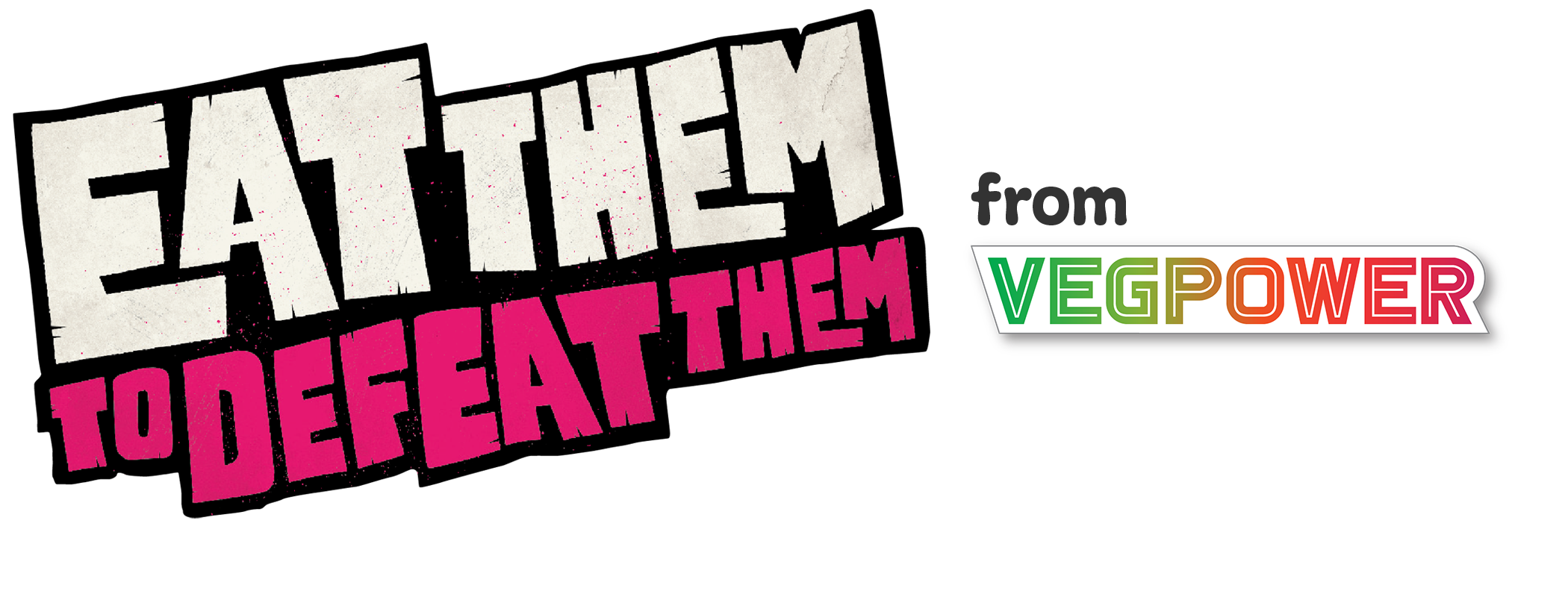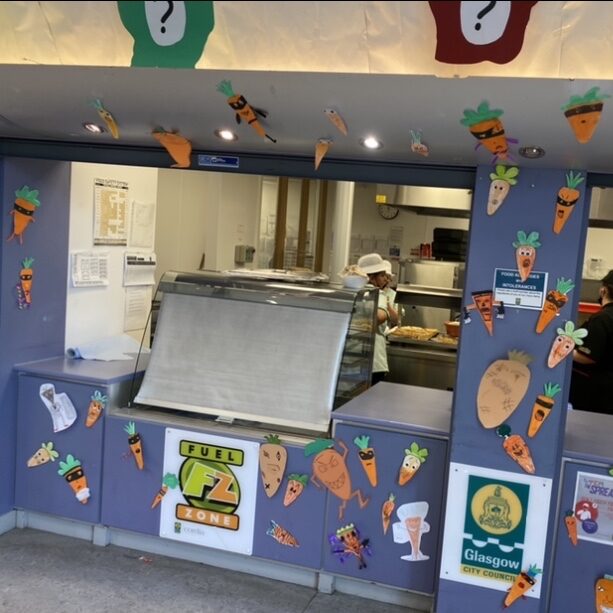My name is Gordon Haveron, Infant Principal Teacher at Tinto P.S in Glasgow. We are running ETTDT in our school, and we are absolutely loving it!
As a teacher and a parent I regularly witness first-hand the difficulties and challenges which come with getting young people to eat vegetables. The huge negative barriers which are built up unknowingly are difficult to remove or lessen. These are reinforced regularly over time through children’s exposure to TV and social circles and hearing lines such as; “vegetables are yucky” or “you need to eat your vegetables to get something nice”. These comments and habits are difficult to change but I believe projects like Eat Them To Defeat Them can make a massive difference.
When I heard about the Eat Them To Defeat Them campaign, I was excited and motivated about making a difference in our families’ lives. I realised that we would need to work as a whole school and engage the entire community to make a real and sustained impact.
At Tinto Primary we have tried to incorporate a number of curricular areas and different groups into our project. Here are some of the ways we have been adding ETTDT to our learning and curriculum each week – I hope they inspire your school, too!
Each week in class our learners watched a short 3-4 minute video which I created based on each of the vegetables. The video was a simple way to educate the children and ensure they had a background knowledge of each veg. The video explained among other things; how its grown, where it’s used and interesting facts and ways to eat them. This linked clearly to our learning in term 4 where lots of our learners were focussed on sustainability, life cyclesd families have really enjoyed these tasks as they allow family members to work together to achieve a shared goal and ultimately be excited by vegetables.
Our amazing catering staff have really bought into the project by changing their clothing to suit the vegetable, creating a brilliant vegetable display each week for our tasting day and adding lovely visual touches and props. This has really helped to engage our learners even more.
Our dining hall display has grown each week as our ‘Tinto Super Veggies’ along with our learners and families have defeated the ‘evil veg’.
Throughout the course of ETTDT we have been providing a regular update on the project on social media. We run a school Twitter account and also a school app. We have been sharing photos, tips and any additional learning which has been taking place at home to inspire other families.
With every passing week we have noticed that there has been a massive rise in children who are clearly inspired by the project. Children have been creating their own vegetable tasks at home such as; evil veg, veggie art work or vegetable stories which have been amazing to see and share with their peers and staff.
Over the duration of the project we have noticed a positive increase in how many of our learners are enjoying and trying vegetables on a daily basis. We have found that the structure and the format of the project has helped hugely in encouraging our learners to try vegetables. We have also had great feedback from our families telling us that the children at home have been eating more veg and that they are amazed at the impact ETTDT has had on their family. If there are any schools who are considering participating in the project, I would strongly recommend it. and water.
Each week we have had 3 different classes focussing on each vegetable. One each from the infants, middle school and upper school. This created a healthy spread of learning across the school. Each class was then able to share their learning with the other children in their department.
On their focus week the classes designed and created their own ‘Evil Veggies’ which were used to decorate the lunch hall to build excitement and atmosphere about the project. This task was fun as it allowed the learners to explore their creativity and take the lead in their own learning. The children were able to select the materials, style and final look of their ‘Evil Veggie’ before displaying it for the whole school to see and enjoy.
We have created a set of ‘Tinto Super Veggie Mascots’ who have helped our learners and families to defeat the veg. This allowed the learners to build up the image of teamwork even more by further reinforcing the perception of ‘us against them’.
The focus class each week were asked to colour and name the ‘Super Veggie Mascot’. Teachers delivered literacy input on appropriate and effective names, images and words children could use to create the perception of heroism or power. This was often tied in with class inputs on resilience or wellbeing.
By giving each class their own challenge, it has allowed them to focus on that particular vegetable. This has made it competitive among classes and stages and ensured learners have strived to do their absolute best. It also removed the element of repetition by not asking learners to do the same tasks 6 weeks in a row, but still allowing them to learn about each vegetable.
Our focus classes ‘Super Veggies’ were entered into a weekly competition which was judged by our School Captains and Vice Captains. This made it aspirational and allowed the children to be motivated by impressing the older learners with their creativity and ideas.
We had our ‘tasting day’ on a Thursday where the learners were able to sample the vegetable of the week. We used that as our day to reveal the winning mascot which added more excitement to the day.
Each week our learners had a task for home to allow us to engage families in the project. Each of the home tasks covered a different curricular area and focused on a different skill set. Our learners an
Gordon Haveron – Teacher
Infant Principal Teacher at Tinto P.S in Glasgow









